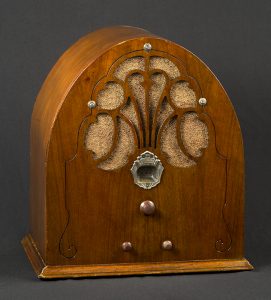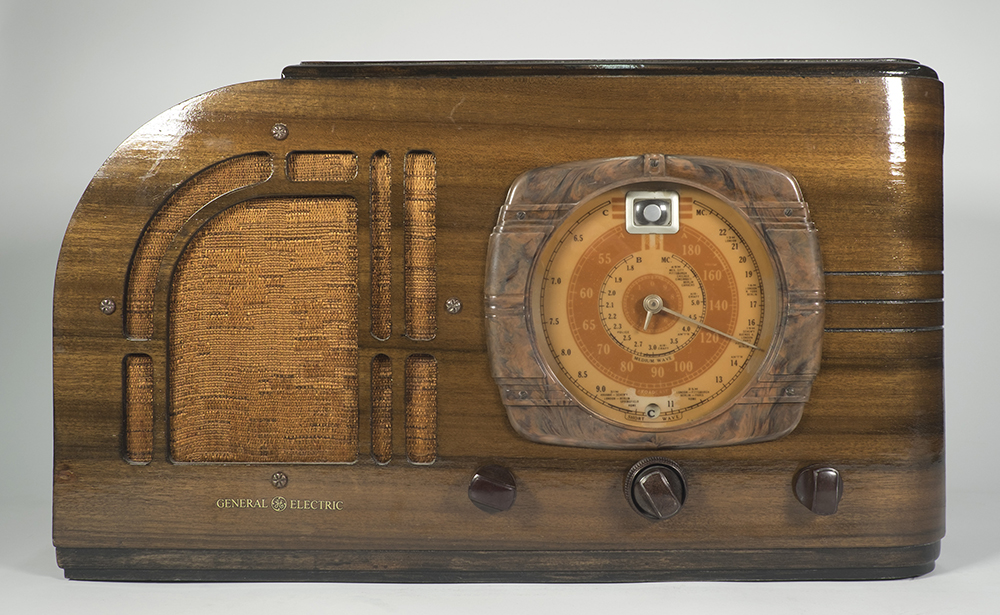Democratization
Radio really took off in the 1930s. In 1931, tabletop radios became readily available in the Canadian market. Manufacturers seized the opportunity to fill the gap between very expensive floor models and homemade crystal sets. The tabletop radio sat comfortably on tables, counters, and the top of the refrigerator if you wished to keep it out of the reach of little hands.
More Canadians were able to buy these moderately priced radio receiving sets. They required little maintenance and fit the needs of the average listener. The knobs made them easier to tune in to a variety of stations. Local stores would sell the radios on layaway.
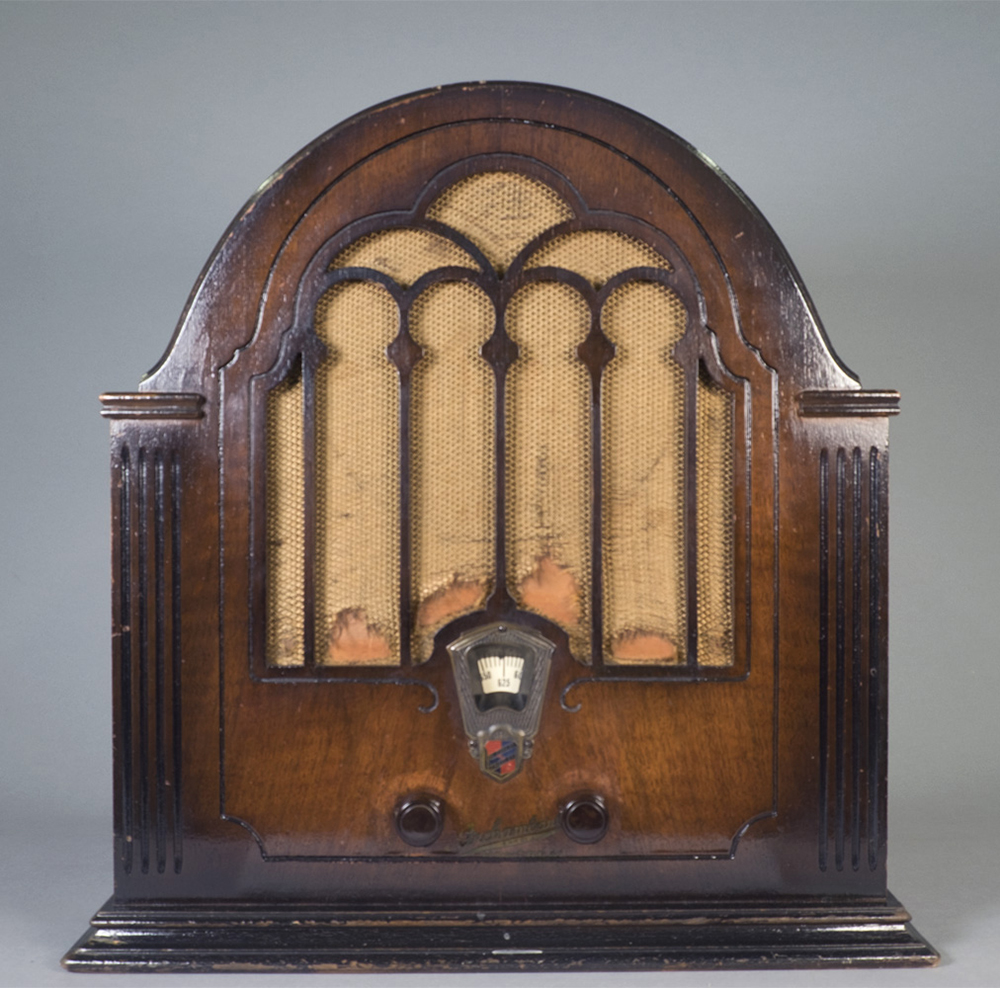
DeForest-Corsley: Model 01331 “Elgin” (1931), Owen Sound, Ontario, 40 x 39 x 27cm. Musée des ondes Emile Berliner.
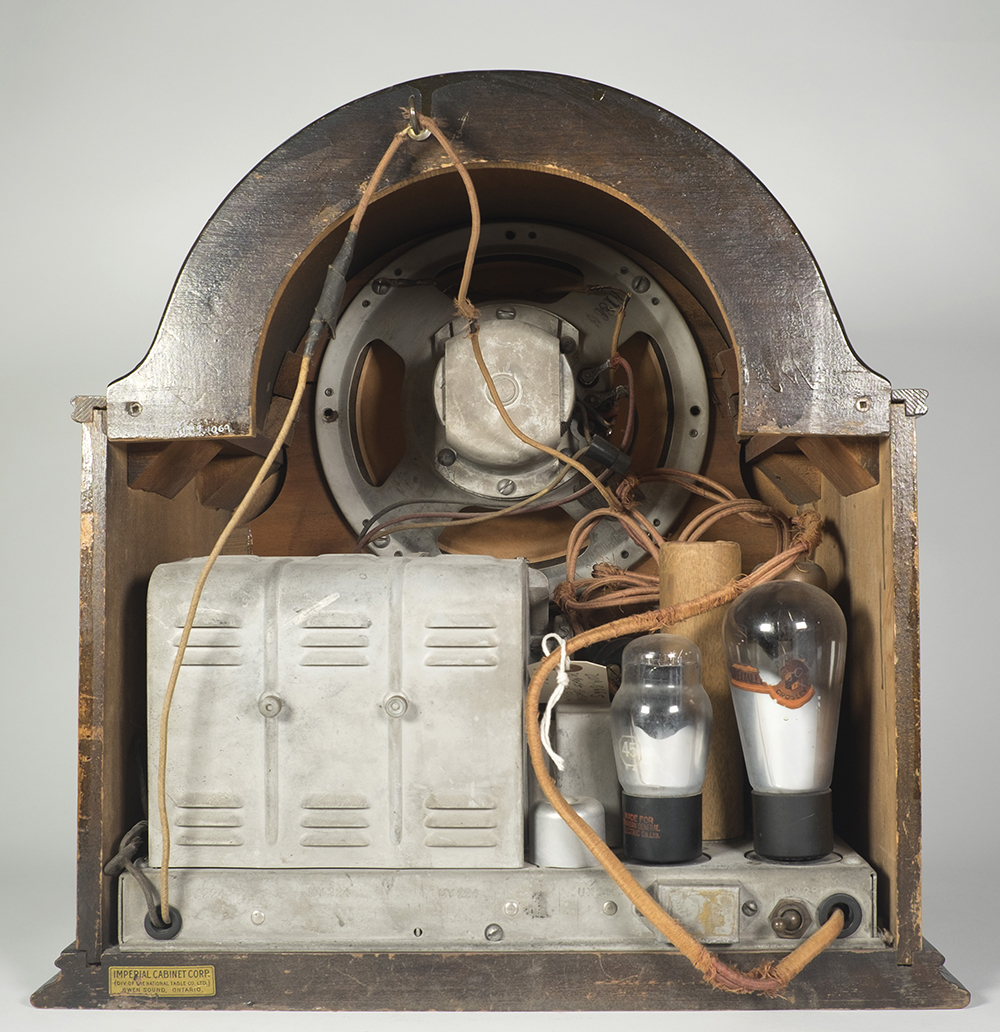
DeForest-Corsley: Model 01331 “Elgin” (1931), Owen Sound, Ontario, 40 x 39 x 27cm. Musée des ondes Emile Berliner.
One of the most distinctive designs of the decade was the cathedral style radio. This 1931 DeForest-Crosley model, shown in front and back views, demonstrates the desire to bring design and quality to the smaller sets and shows inside the radio its vacuum tubes.
Companies produced a variety of different models to satisfy this new wave of Canadian radio listeners. The Rogers Majestic model 8R723, shown below, was typical of the era. It had prominent knobs for tuning and volume and could be plugged into a socket. Eliminating batteries was a great convenience for city dwellers in Canada, who had electricity in their homes in the 1930s.
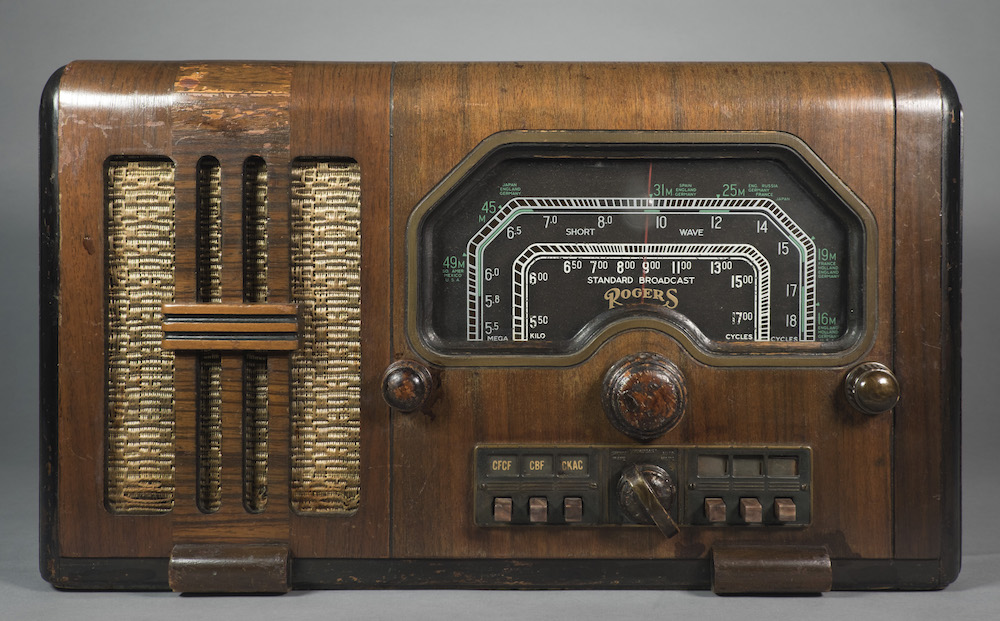
Rogers-Majestic Corporation Ltd: Model 8R723 (1938-39), Toronto, Ontario, 30 x 51 x 26cm. Musée des ondes Emile Berliner.
Designers continued to create radios as objects of beauty, despite their new functionality and common use in most Canadian homes. Designers drew inspiration from fast flying bullets, planes, and automobiles. Dials, always an important element on the radio receiver, became elaborate, featuring frames and place names. This was a far cry from the austere radios of the 1920s.


